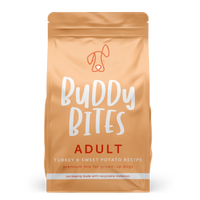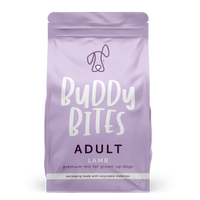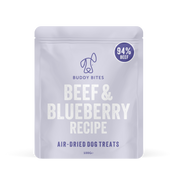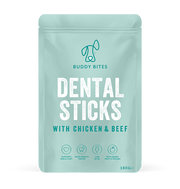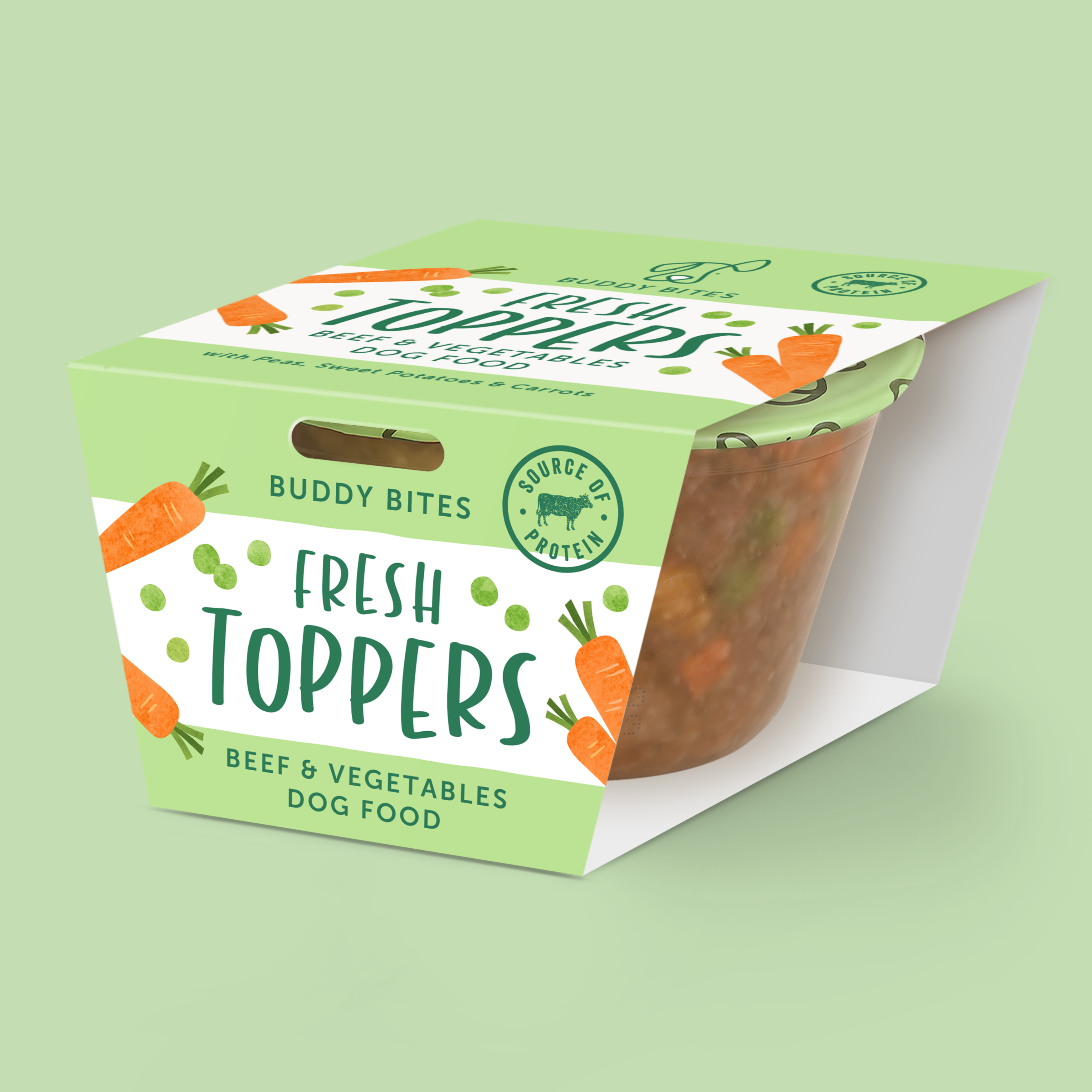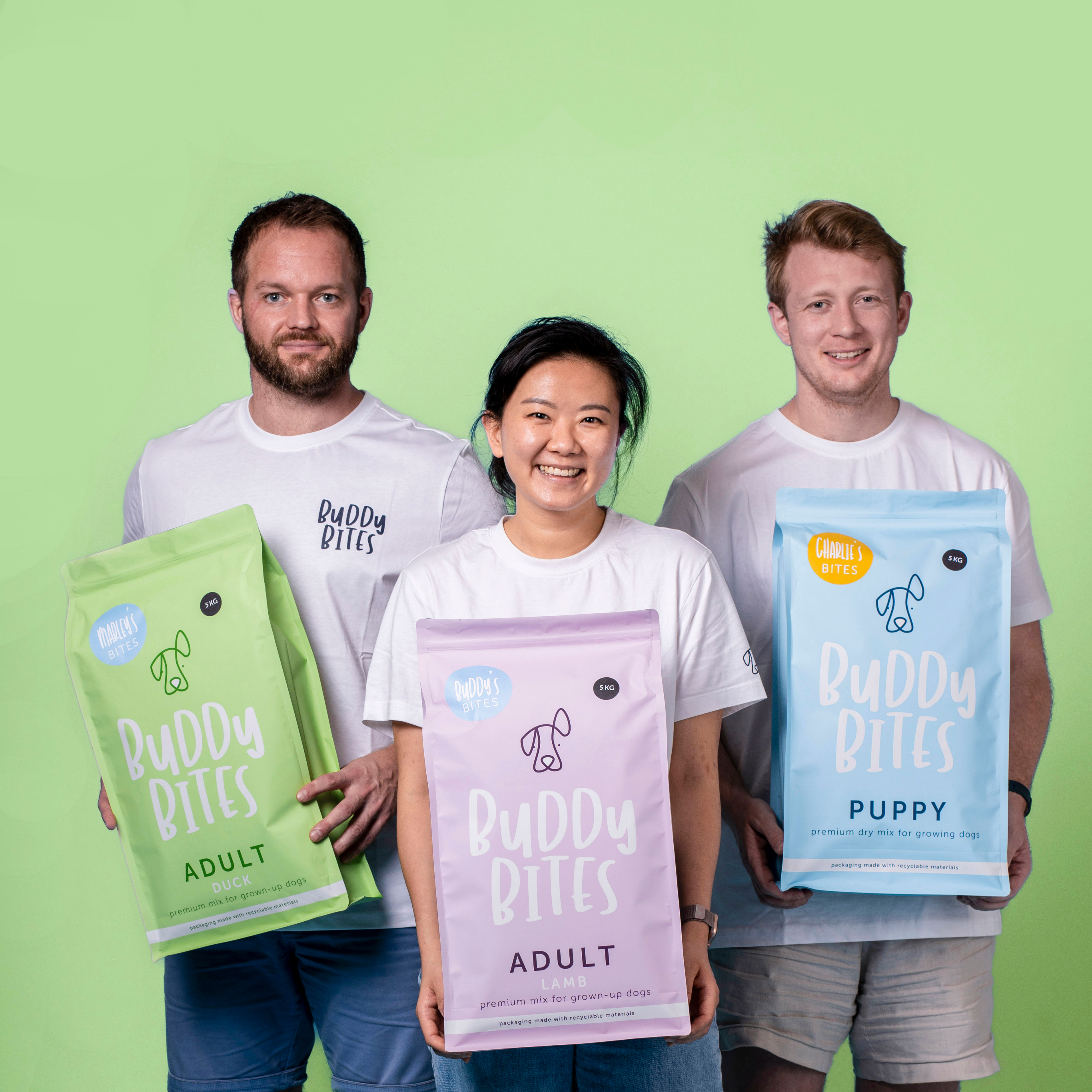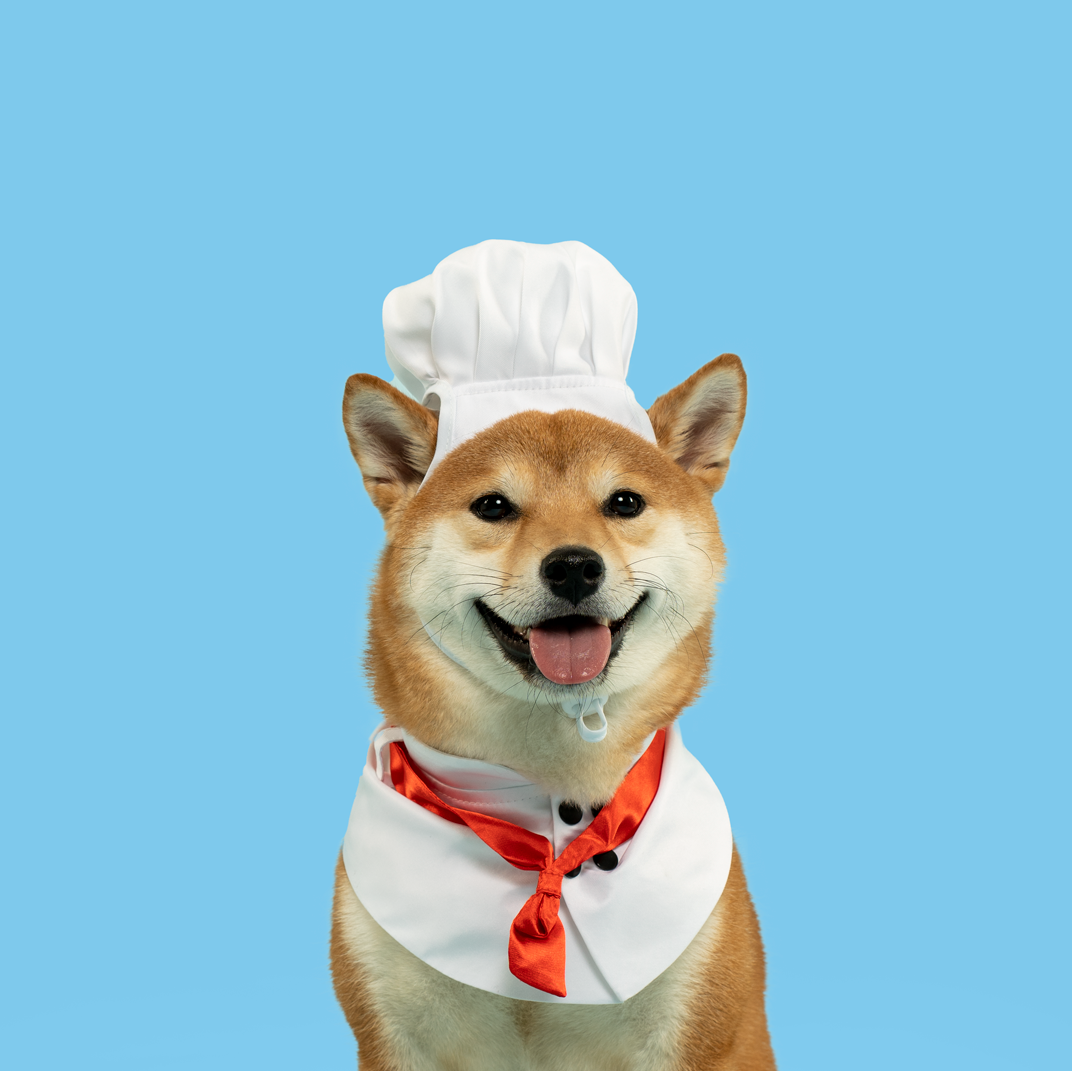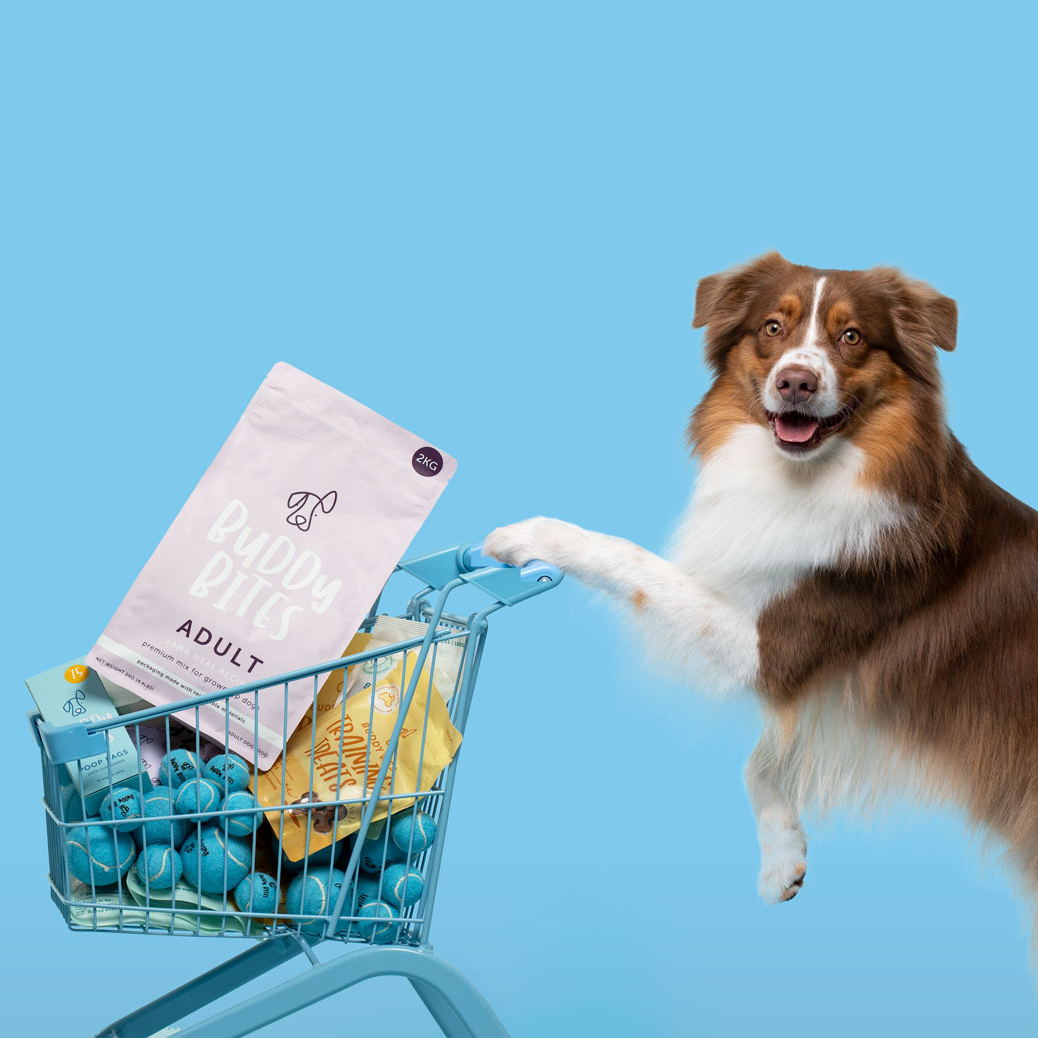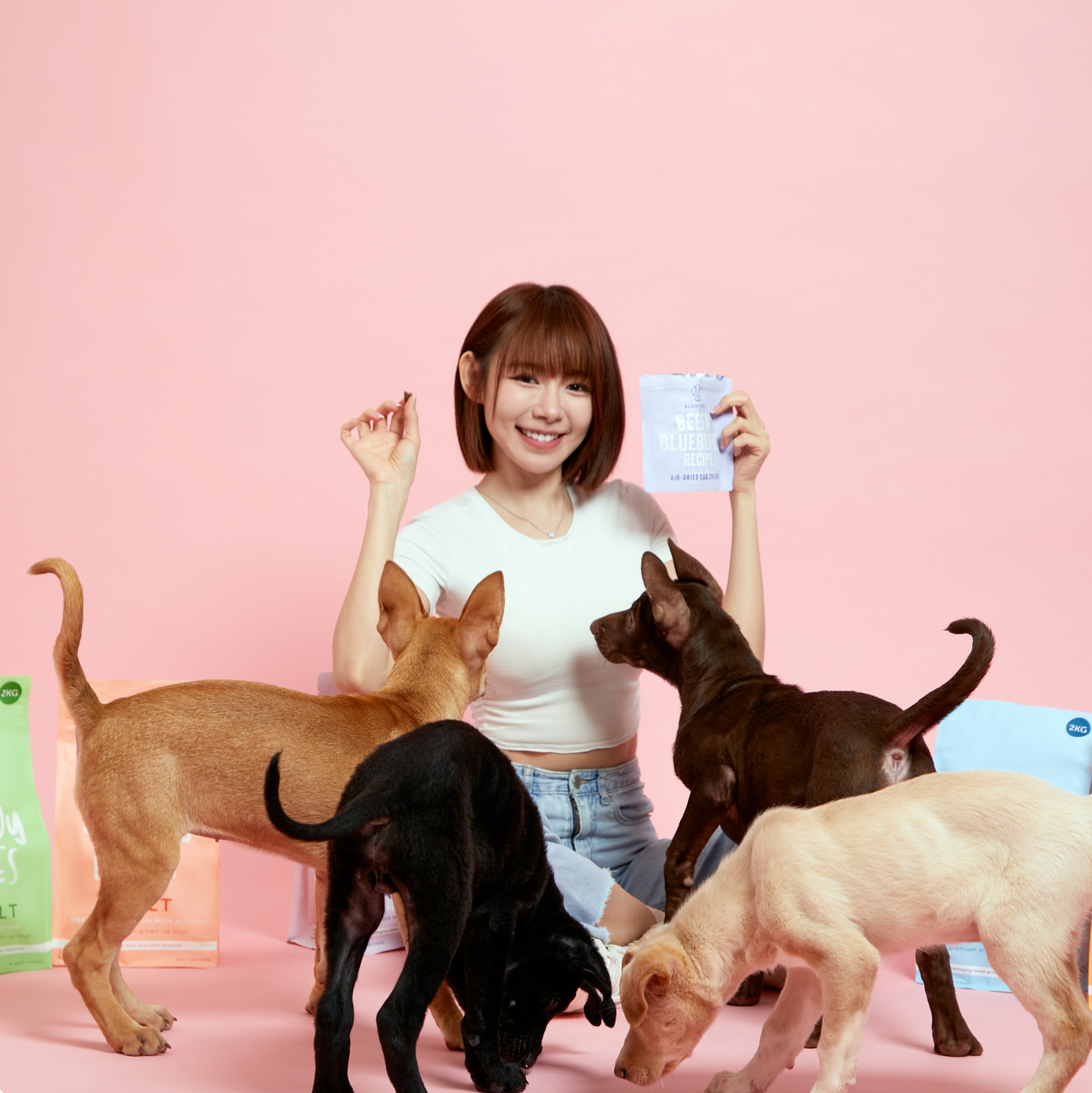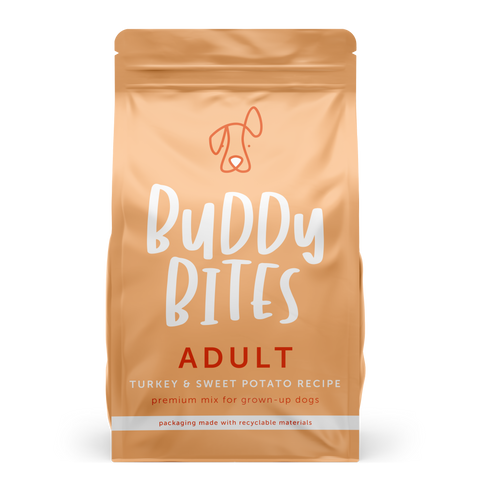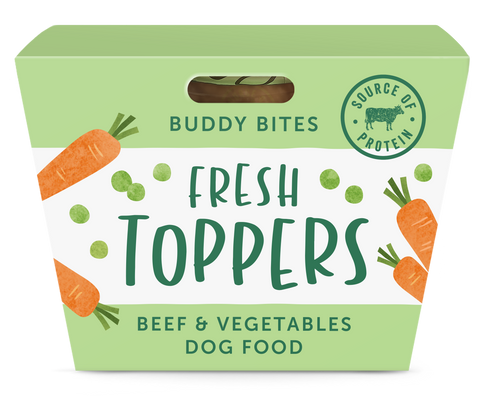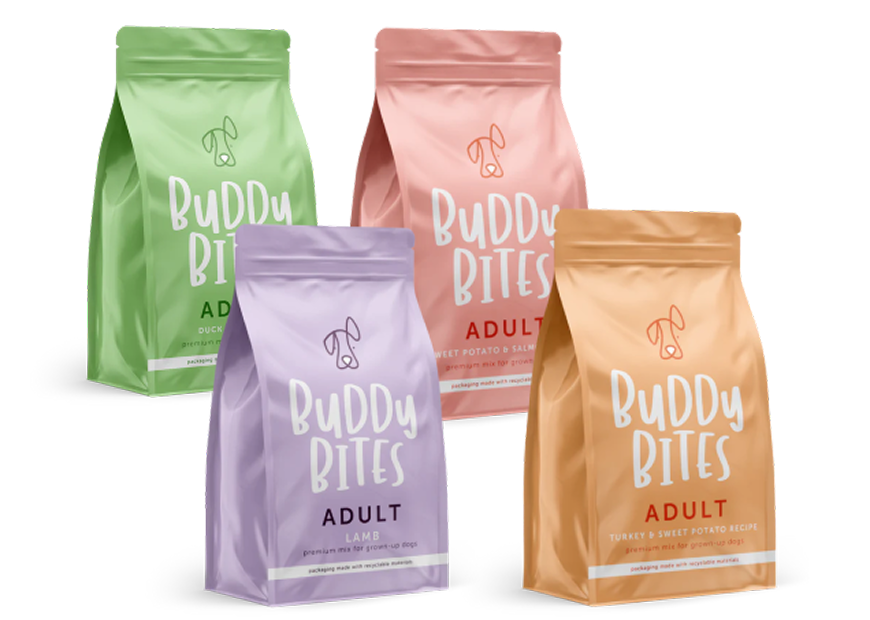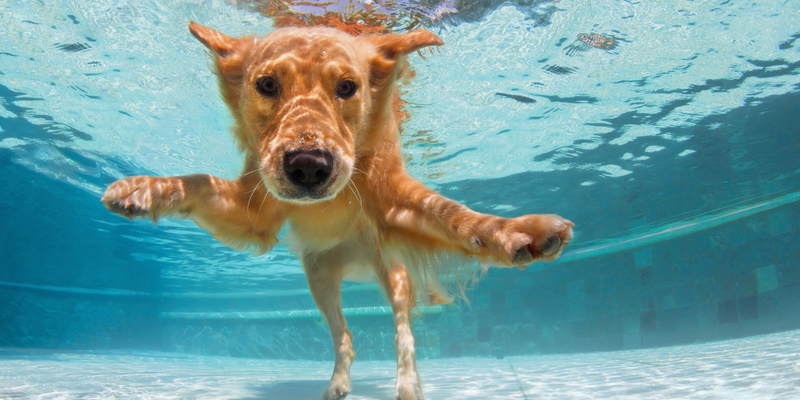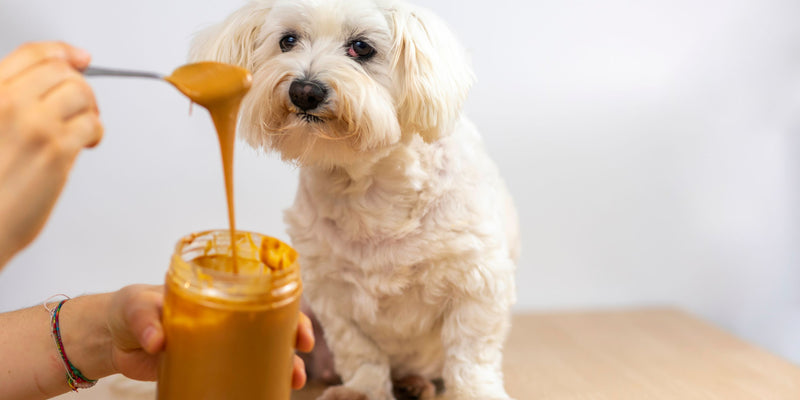9 Top Tips on How to Store Dog Food Properly
May 20, 2023
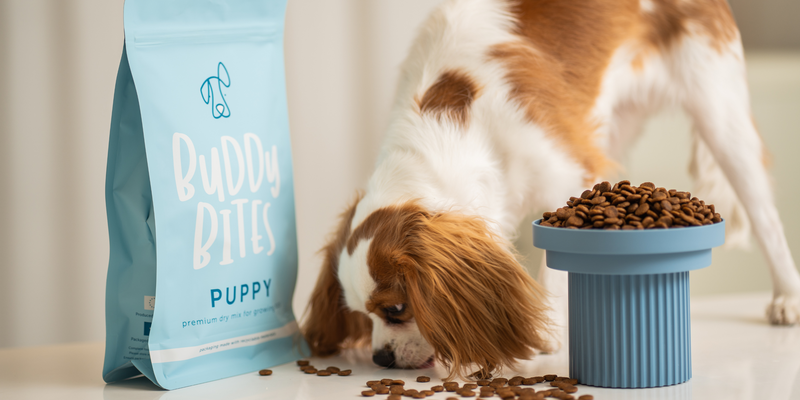
Ah, another day, another blog post. Today's topic: storing your dog's dog food. Because apparently, some of you need instructions on how to do that. But don't worry, we’re here to help — plus to talk about how Buddy Bites can help you.
Proper storage of dog food is essential to maintain its freshness, quality, and safety for our furry friends. It helps prevent the growth of bacteria and other harmful microorganisms that you won’t be able to see, which can lead to illnesses and health problems in dogs.
Below are our best practices for storing dog food and how to maintain its quality.

Consider The Type of Dog Food
That’s right, there’s more than just dry dog food. Besides kibble, there’s wet, air-dried, freeze-dried, dehydrated, powder, frozen, and broth — that’s more options than a human baby has! You lucky dogs you!
When storing dog food, it's important to consider the type of food you are storing. Dry dog food is more resistant to spoilage than wet or canned food, which is why you often find that the shelf life is longer for dry dog food types. All dog food can still go bad though if they’re not stored correctly.
Wet or canned dog food should be refrigerated after opening and used within a few days to prevent spoilage, just like milk. Check the instructions on the nutritional label and store them properly in airtight containers, pop on one of those silicone can covers, or scoop out the contents into a reusable food bag that will seal out all moisture to keep it as fresh as possible for your canine.
Keep The Dog Food In Its Original Bag
Wow, what a revolutionary concept. You might be surprised to learn that keeping the bag of food it came in means less exposure to contamination through handling. The lining of pet food packaging bags is not completely useless. It provides a final layer of defence that is specifically designed to prolong the shelf life of the contents inside — aka your dog’s food. Who would’ve thought that.
Choose The Right Container
If you want to keep your dog's food fresh for longer, you can use an airtight container. That way, your dog can have fresh food and you can feel like you're doing something important. Make sure to choose the right container that has a silicone seal along the rim of the inside that makes them ideal for keeping them air tight. What does that mean? Keeping air and moisture out. Plus, any pesky pests from getting into the food.
By keeping the food fresh, nutritional values are kept intact and the palatable flavour is retained.
Go BPA-free or better yet, glass. It’s not like you’ll be lugging around glass containers of dog food — they’ll be stationed at home. They should be made of food-grade materials that are safe for dogs and don’t leach chemicals into the food. Metal containers with tight-fitting lids like silicone are also a good alternative.
Our winning tip: place the whole bag of dog food into a massive airtight container and seal them both together all-in-one.
Seal the dog food before it’s ready to use and be sure to clean the container regularly — because well, mouldy dog food is a real turn-off.

Store in a Cool & Dry Place
Keep the food away from sunlight. Well, no s***, Sherlock. You don't want your dog's food to go bad, so don't store it in a sauna. This means not storing it in a cupboard above the stove or oven either, or right next to a heater or your refrigerator because they generate heat during the process of making cold air to cool the interior.
Stay away from moisture as well, so anywhere that is prone to humidity, like your balcony, may get soaked from time to time by the city’s tropical torrential rain. All of these things — heat, moisture and sunlight, can cause your dog’s food to spoil and lose its nutritional value — and you wouldn’t want that.
Ventilation is key for keeping out humidity to avoid unwanted critters and sun can ruin food, so don’t put it in direct sunlight. Keep the food in a dark place — or better yet, put it in a vampire-proof container.
Check the Expiration Date
Believe it or not, dog food can expire. I know, shocking. Dog food has a shelf life, and it's important to check the expiration date before buying and storing it. It goes without saying to use it before it goes bad. It's not like you want to feed your dog something that could make them sick or anything and wake up with diarrhoea — everywhere.
Avoid Overstocking on Dog Food
There’s nothing like the fresh scent of staleness. We get it, sometimes you just want to get all of the adulting over and done with, so you pop out to the mart in your car and lug back big bags of dog food. But stale is not the new black. Eating tasteless food is just as non-exciting as it is for your dog as it would be for humans. So don’t over buy.
Buy only the amount you need for a set period of time and this will keep the nutritional value in your dog’s good. Out goes bulk buying, in comes subscriptions.
Top tip: If you already bought in bulk, divvy up your dog’s food into smaller portions and store them in individual containers. This allows you to use only what you need, keeping the rest fresh.
Don’t Mix Old & New Dog Food
You know what they say — food never failed to make you happy — not. Unless you want to wake up in a sea of dog poop, don’t switch your dog's food too quickly. This means don’t store a bag of old dog food in the same container as the bag of new dog food.
Mixing them together would mean not being able to sift out one expiry date from the other, unless you want to sit and wait until the kibble from the old bag starts to mould, or worse, smell, and then manually sift them piece by piece by hand. It would be like a deep, giant puzzle that would be much less fun and much more unsatisfactory at the end.
Food that goes off can give dogs digestive issues and the same goes for mixing one brand of dog food (existing) with another brand of dog food (new). Gradually switch food from one brand to the other over the course of 7-10 days. If you're still confused, just ask your dog. They'll probably give you a look of utter disbelief that you even need to be told this.

Clean Containers Regularly
Last but not least, clean the dog food container regularly. Because nothing says "I love you, Fido" like a mouldy, bacteria-filled tub. Empty the container and remove any food particles and residue from the container, as they can attract bacteria and insects.
Use hot, soapy water to clean them thoroughly, and any other feeding accessories, such as if you leave a kibble scoop inside. Rinse it thoroughly dry so that no moisture is trapped inside. Make sure it has plenty of ventilation before sealing it shut with your canine’s dog food inside — and maybe wash your hands while you're at it too.

Don't Store Dog Food in the Fridge or Freezer
We bet you didn’t know that not all food can be stored in the fridge or freezer. You guessed it, dog food happens to be one of them. Who knew! While it may be tempting to do that, it’s not recommended. Dry dog food is formulated to be stored at room temperature, and refrigerating or freezing it can cause them to lose their nutritional value and flavour. Additionally, the moisture from the fridge or freezer can cause the food to go bad even faster and your pooch wouldn’t want that.
In conclusion, storing your dog's food properly isn't rocket science. Just keep it in the bag, in a cool, dry place, away from sunlight, and use an airtight container if you're feeling fancy. And please, for the love of all things holy, don't mix old and new food. Your dog's stomach (and their judgmental eyes) will thank you.
Not sure why your dog is not eating their food? Your dog may be a fussy eater — have a read of one of our Co-Founder's experience with his own dog, Nacho.